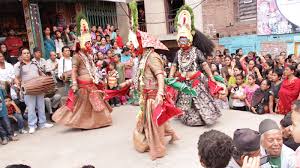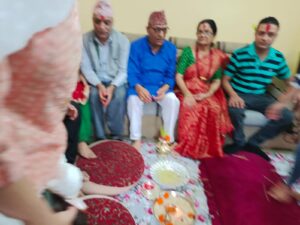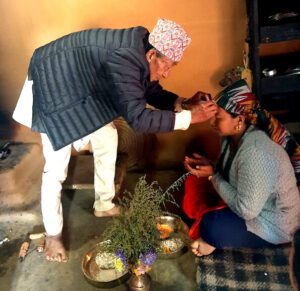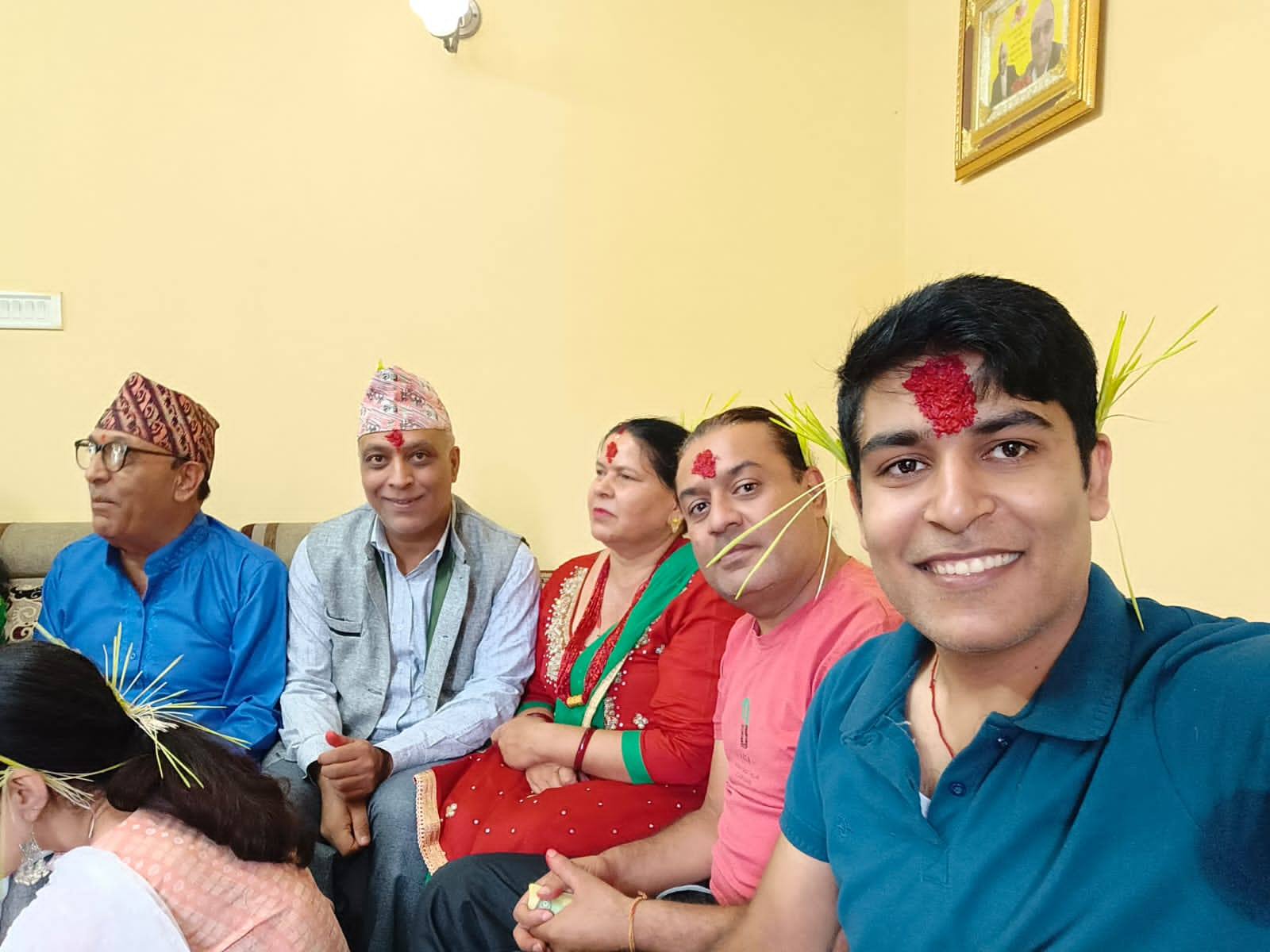The Dashain festival in Nepal, also known as Vijaya Dashami, is the largest and longest festival celebrated by Hindu Nepalis in the world. Dashain in Ashwin (September/October). Ashwin is the happiest month that brings joy and smile to Nepalese people.
Flowers, candles, offerings, promises, dances, lanterns, processions and pilgrimages, family celebrations throughout the region. This is how Dashain is celebrated, which is the longest and most important festival in Nepal. It is also celebrated in neighboring countries such as Bhutan and parts of northeast India, but this picturesque tradition has its roots in Nepal. Dashain lasts for 15 full days.The ceremony begins with the new moon and ends with the full moon from September to October. The most important cult and the richest puyas (sacrifices) are dedicated to the goddess Durga, who is the symbol of truth, justice and virtue.

Durga, goddess and guardian of cosmic balance, According to sacred texts, Durga was created between Lord Shiva and Vishnu to defeat Mahisha, the “buffalo demon” who altered the balance of the world. It has 8 or 10 arms that extend in all directions (symbolizing protection from all angles), each hand holds a different weapon (various God-given items), three eyes (desire, action, and wisdom), and is mounted on top. With the head of a tiger or lion, a sacred animal that symbolizes strength, will and determination, Durga perfectly masters these virtues. Durga’s fight with Mahisha lasted for nine days and nine nights. Durga defeated the fearsome demon and once again restored the balance of the universe.
The first nine days of Dashaina are a battle between Durga and Mahisha. The game is commemorated with animal sacrifices in homes and temples, mainly buffalo and goats, but also chickens, pigeons and ducks. His blood swam in many sculptured temples in Nepal. This year 2016 (2073 in the Nepalese calendar) was only sacrificed to Durga to commemorate the Durga Capital Temple. Her blood was poured into various sculptures that represented the goddess in the so-called sacred baths.
 In recent years, criticism of this bloodthirsty practice has grown around the world, and indeed, vegetarianism has gained a growing number of followers among the people of Nepal. This is why many people choose to use coconuts instead of animals. They broke them in front of the temples and offered them to the gods as a sign of respect. Another less intimidating way to worship your divinity.
In recent years, criticism of this bloodthirsty practice has grown around the world, and indeed, vegetarianism has gained a growing number of followers among the people of Nepal. This is why many people choose to use coconuts instead of animals. They broke them in front of the temples and offered them to the gods as a sign of respect. Another less intimidating way to worship your divinity.
The importance lies in the family, during the celebrations, unity and the reestablishment of community ties are of particular importance. Every year, more than two million Nepalis travel to their hometowns from all over the world to visit their relatives and receive the blessings of their elders. Red is the main color of clothing and ornaments, symbolizing the blood that unites the family. The older male is in charge of putting the Tika on all his relatives.
Tika
Among the different varieties, in Nepal it is characterized by a mixture of rice, red ginger powder and sandalwood or yogurt.
The ritual may vary by surname or region. In Kathmandu, generally the elders of the family are the ones who put the Tika on the forehead of any family member who comes to receive their blessing.

The person receiving the Tika sits in front of it on the ground. The grandfather made a thick paste with these ingredients and blessed him by placing tika in the center of his forehead. The names of the patriarch are usually improvised and are different for each member of the family. It is usually applied to prosperity, life, fertility, and luck. After the blessing, Jamar’s branch is placed on his ear. Jamara (Jamara) is a fertilizer made from beans, meat and sand fertilizers planted at home. They listened to him with holy water and planted sprouts on the board. When placed in the jamara on the forehead and behind the ear, the venerable relative will give money and a crystal of sugar, which is a symbol of wealth.
After the ceremony they shared a meal as an example of solidarity, abundance and generosity. The traditional way is to eat the classic Dhal Bat (rice with lentil soup and vegetables stewed with various spices). During Dashain, meat (buffalo, goat or chicken) is usually added to the feast and finished off with a sweet called Selroti, which is a round dough made of rice, flour, milk, coconut and honey. Crispy and tasty!
After the meal, music and dancing fill the Nepalese home with laughter and movement. No wonder people come and go from time to time to receive blessings and gifts from relatives.
Visit Nepal during the festival and enjoy like a Nepali. Get to know these people culturally. This is the best way to learn about the roots and traditions of the Nepalese people. Every year many people visit the country at this time of year. The atmosphere and hospitality are at their highest level when traveling during the Dashan festival.
After a normal working week, Nepalis once again celebrate the second largest festival, Tihar. Follow our blog for similar information. If you want to travel during the Dashain or Tihar festivals in Nepal, please contact our travel planners. We will weave the best itinerary for you to enjoy the natural wonders and cultural greatness of Nepal.
You want to know more about the culture of Nepal read the following article here.




